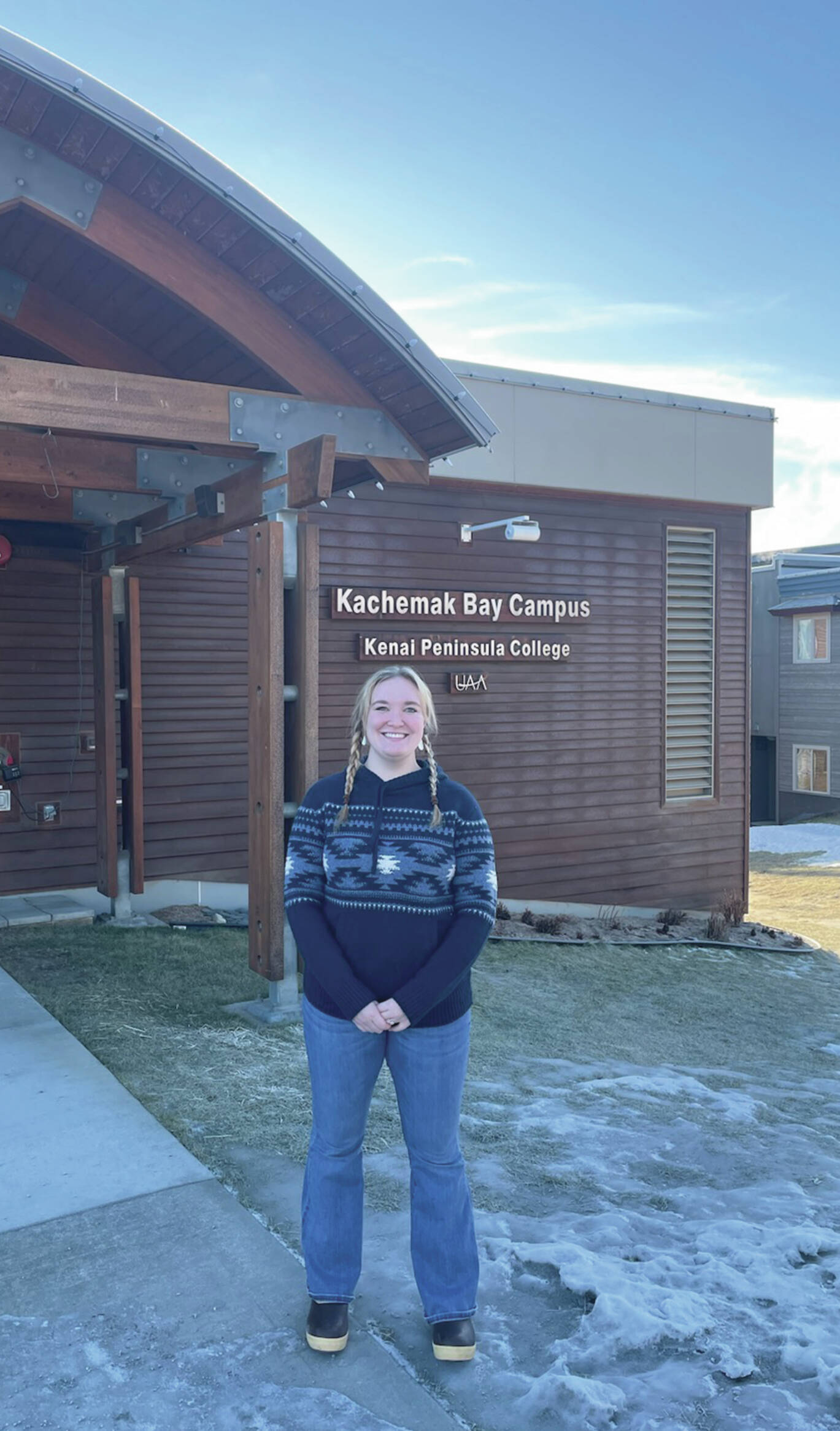Homer’s Kachemak Bay Campus welcomes the newest cohort of Semester by the Bay students. Twelve students — visiting Homer from colleges and universities as far away as the University of Maine and Florida International University and as close as Alaska Pacific University — started the spring program Jan. 16.
According to their website, fall Semester by the Bay students focus on marine mammal studies. Students in the spring cohort have an environmental conservation concentration. A 2014 Homer News article reports that the program was developed as part of a 20-year-old initiative by KBC to capitalize on Homer’s proximity to Kachemak Bay’s vibrant marine ecosystem by offering programs, degrees and courses in the marine sciences.
Semester by the Bay launched in the fall of 2011 with two students from the University of Alaska Anchorage and Western Washington University, and has grown with KBC’s marketing efforts since then. Field studies in Kachemak Bay and in other outdoor settings on the Kenai Peninsula are a large part of what the program offers in order to provide “access to authentic natural classrooms,” the program website explains.
In their first week on the Kachemak Bay Campus, the students had already visited an oyster farm but were still mostly just settling into their time on the new campus.
Debbie Tobin, professor of biology, is the director of the program and Ken Goldman is the program liaison and an adjunct faculty member on the campus. In the spring 2024 semester, he is teaching conservation biology and global climate change.
This fall the program also welcomed Sara Wilhelm as the new lab technician. Wilhelm grew up near Charleston, South Carolina, and participated in Semester by the Bay in the fall of 2020.
“When I was in the program it was during COVID, so it was a little different than the typical SBB. That semester it was only myself and two other students and instead of more official field trips, we kind of operated out of a little COVID bubble,” Wilhelm said.
She explained that though her cohort was small it did offer the opportunity to spend more one-on-one time with Tobin and other professors involved with the program.
2020 was Wilhelm’s second semester in Alaska. She came initially for internship in Seward at the Alaska Sea Life Center in 2019.
“As soon as I heard about an opportunity to come back to Alaska, I jumped on it. I fell in love with Alaska that summer.
“Debbie (Tobin) had come out to my campus to do some marketing and share what the Semester by the Bay could offer. I immediately signed up.”
Wilhelm’s internship when she was part of the program was with the North Gulf Oceanic Society. Wilhelm describes the organization as focusing primarily on killer whale research. The organization, founded and directed by Craig Matkin, provides more specific information on their website at www.whalesalaska.org.
As an undergraduate, Wilhelm’s study focus was in animal husbandry. She defines that as animal care in zoos and aquariums.
“I put out my resume to just about every accredited zoo and aquarium in the country to see what I could get. I got an offer to go to the SeaLife Center to work with sea birds and I thought it sounded like a really cool opportunity.”
After graduating, Wilhelm ended up back at the Sea Life Center again for a seasonal job.
As a lab technician, Wilhelm focuses on lab safety and helps students with things like checking out binoculars or snow boots.
Later in the semester when the students are conducting their own research projects, Wilhelm will be helping them set up and run lab work.
“My internship with the North Gulf Oceanic Society really put me more in touch with research opportunities and that’s what my master’s focuses on now. So, that opportunity really helped me fall in love with what I want to do. I’m a first semester graduate student with UAA.”
The spring 2024 cohort will take courses in conservation biology, exploration ecology, global climate change and a seminar course.
Students also participate in an internship course. Field work outside of class time is also included in the program. Internships are offered through a variety of local organizations, including one at the Alaska Maritime National Wildlife Refuge, Islands and Oceans Visitor Center, the Alaska Department of Fish and Game, the Center for Alaskan Coastal Studies, City of Homer, Public Works, the Kachemak Bay National Estuarine Research Reserve and NOAA.



